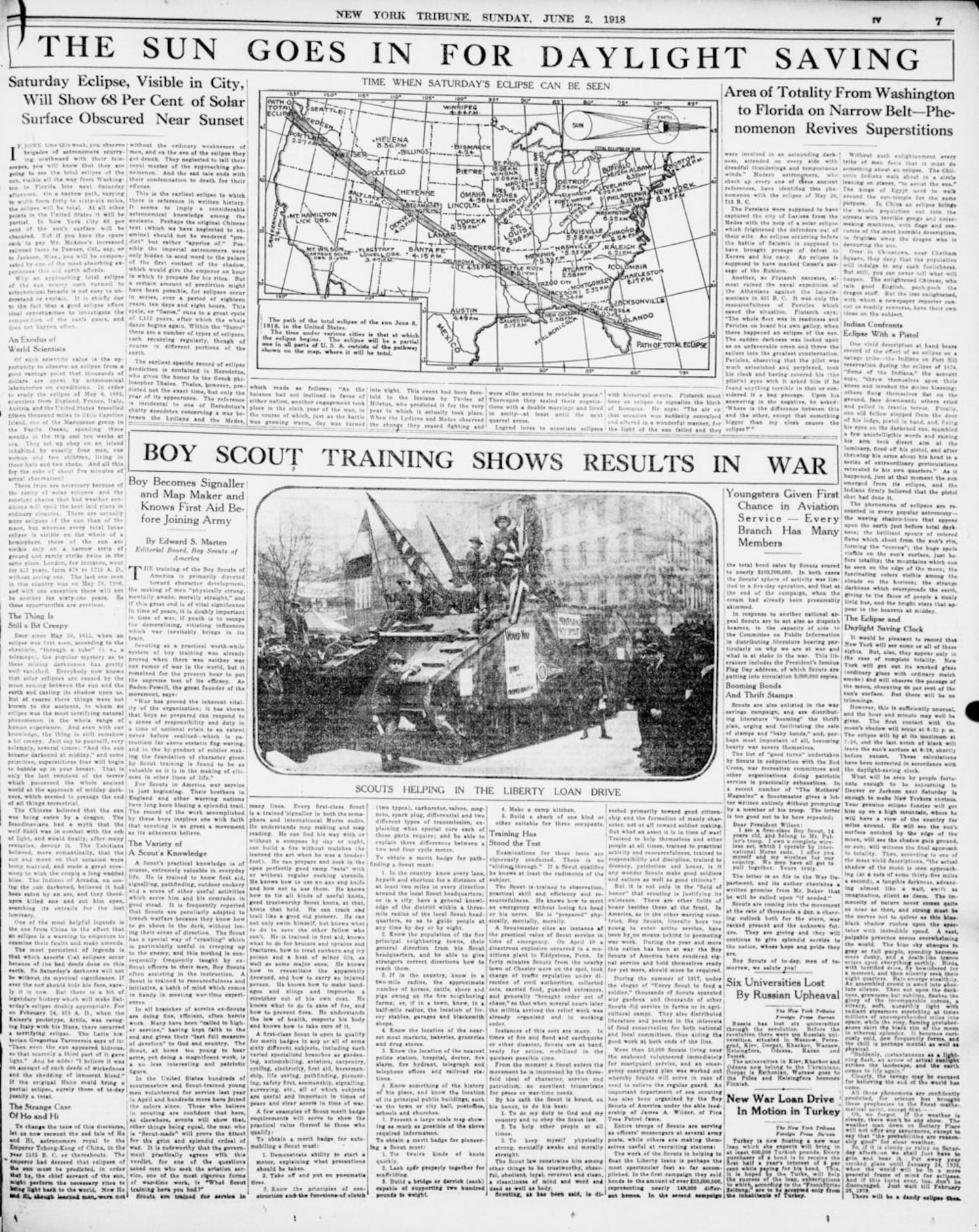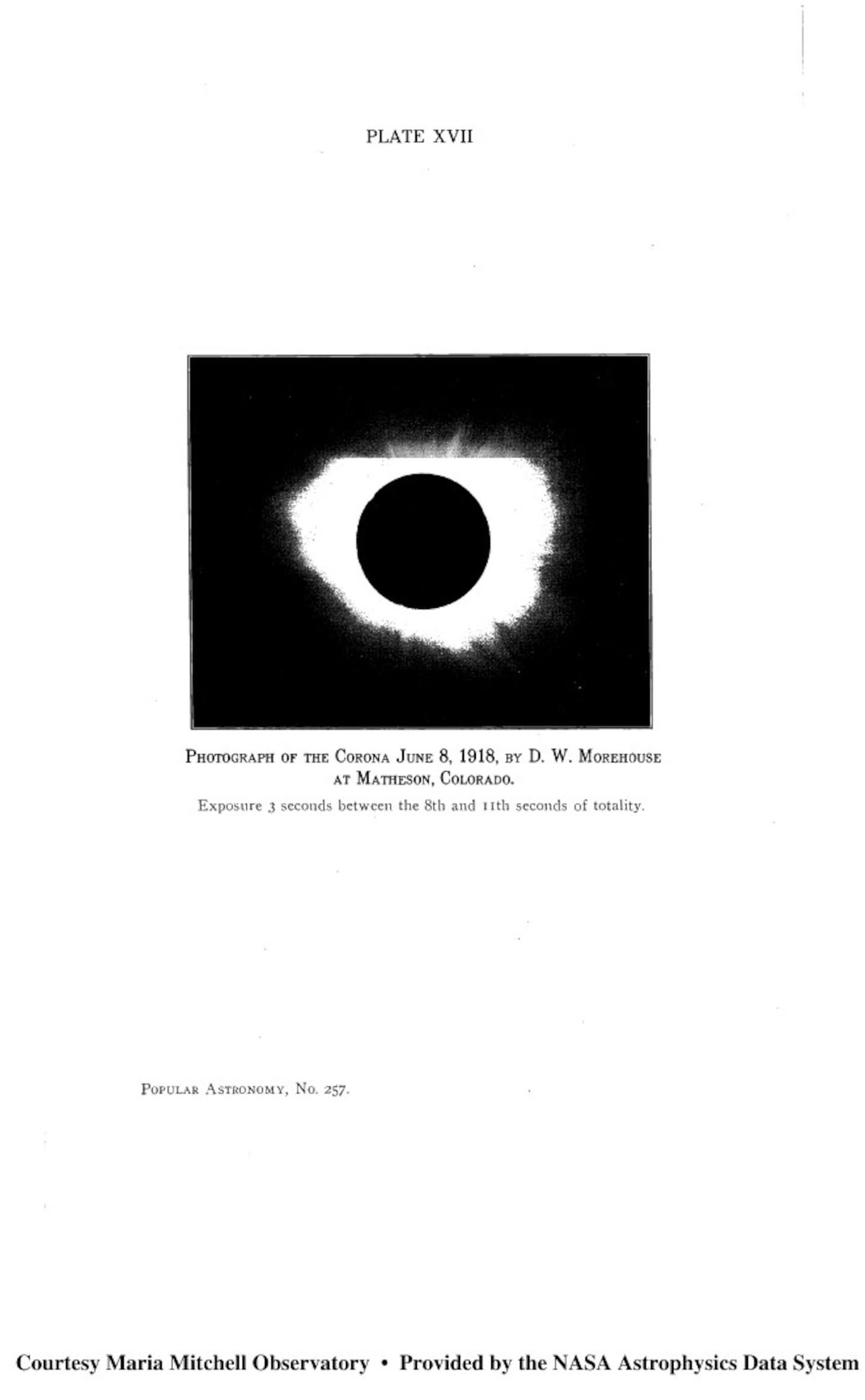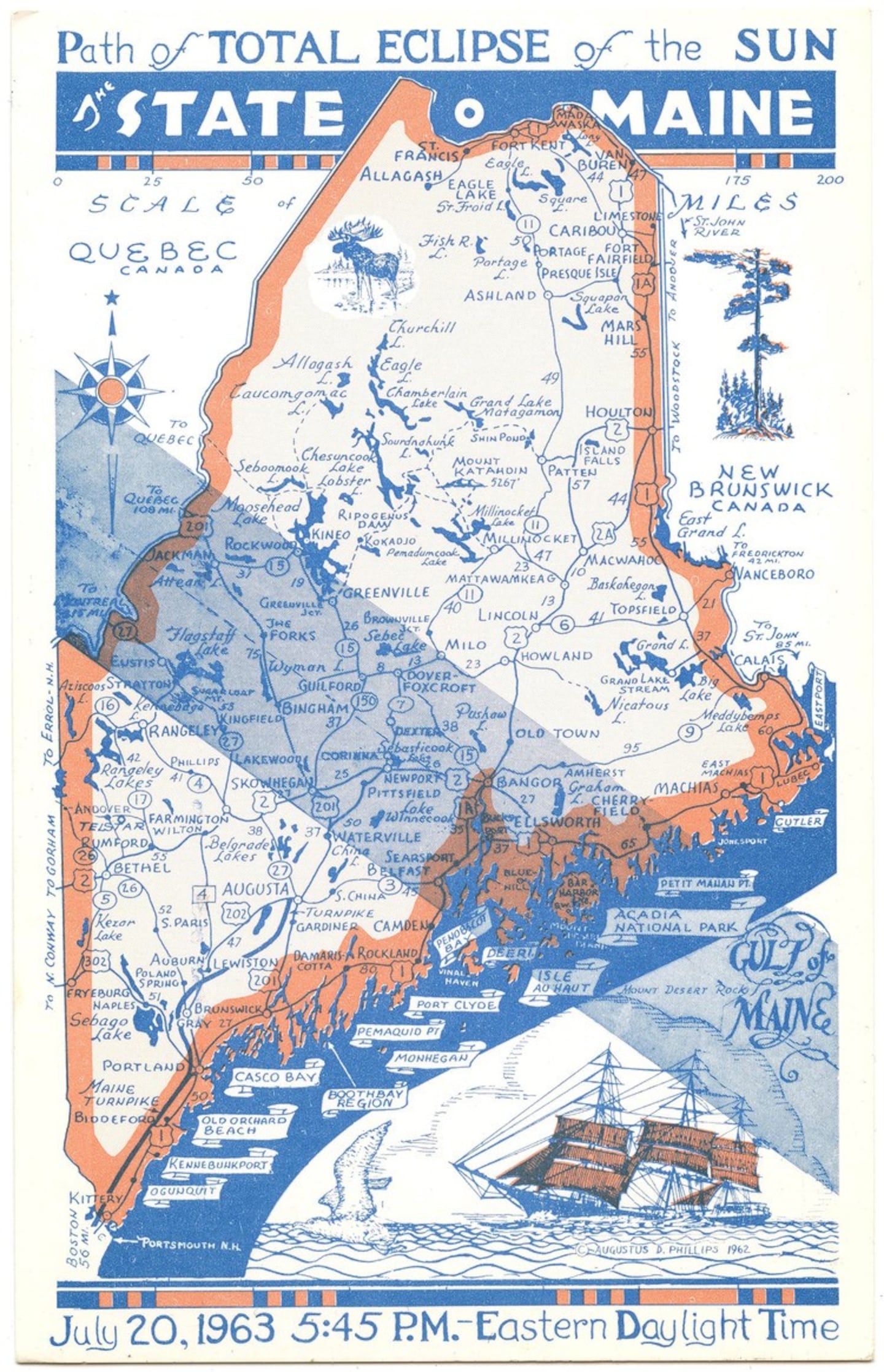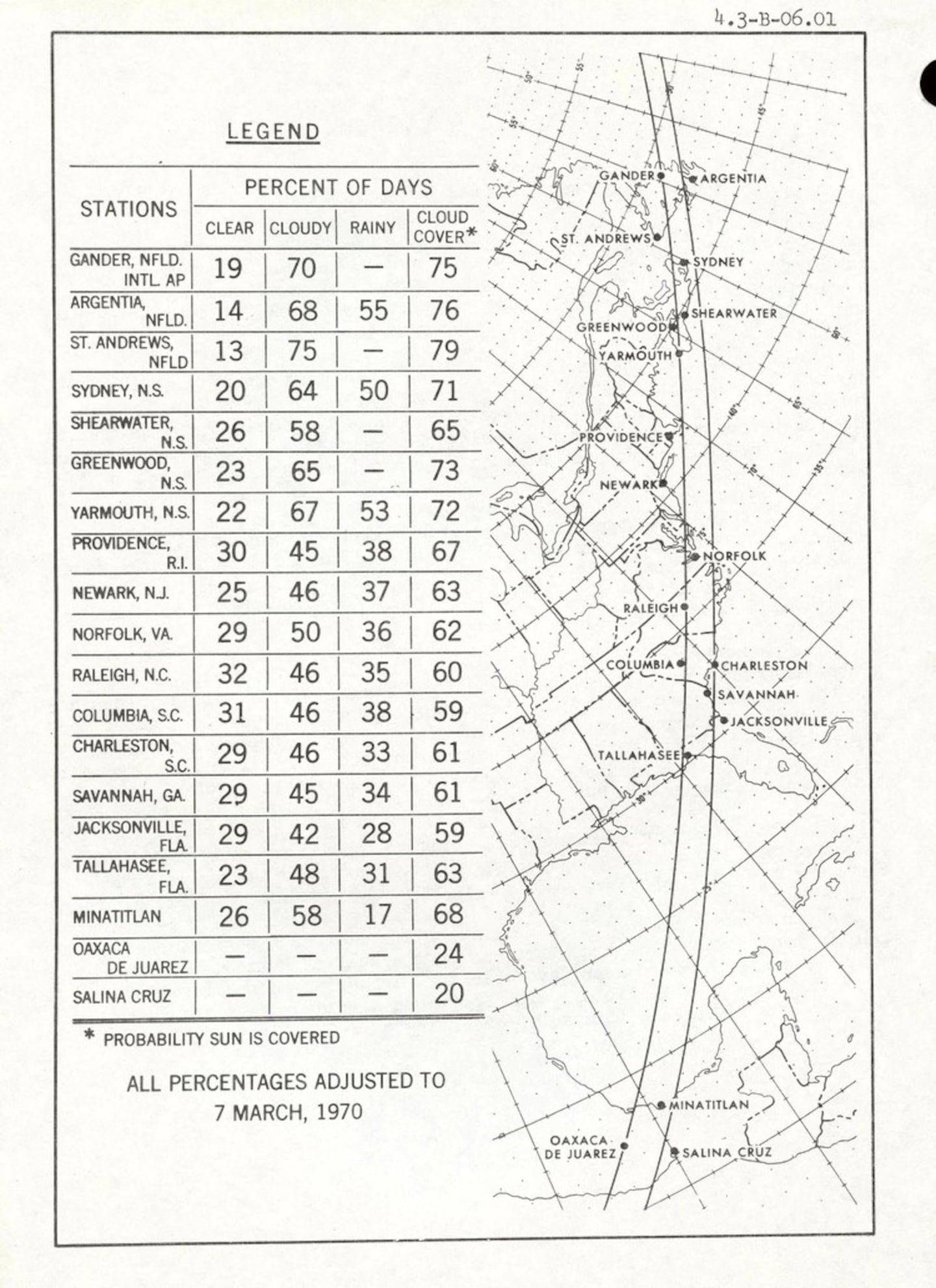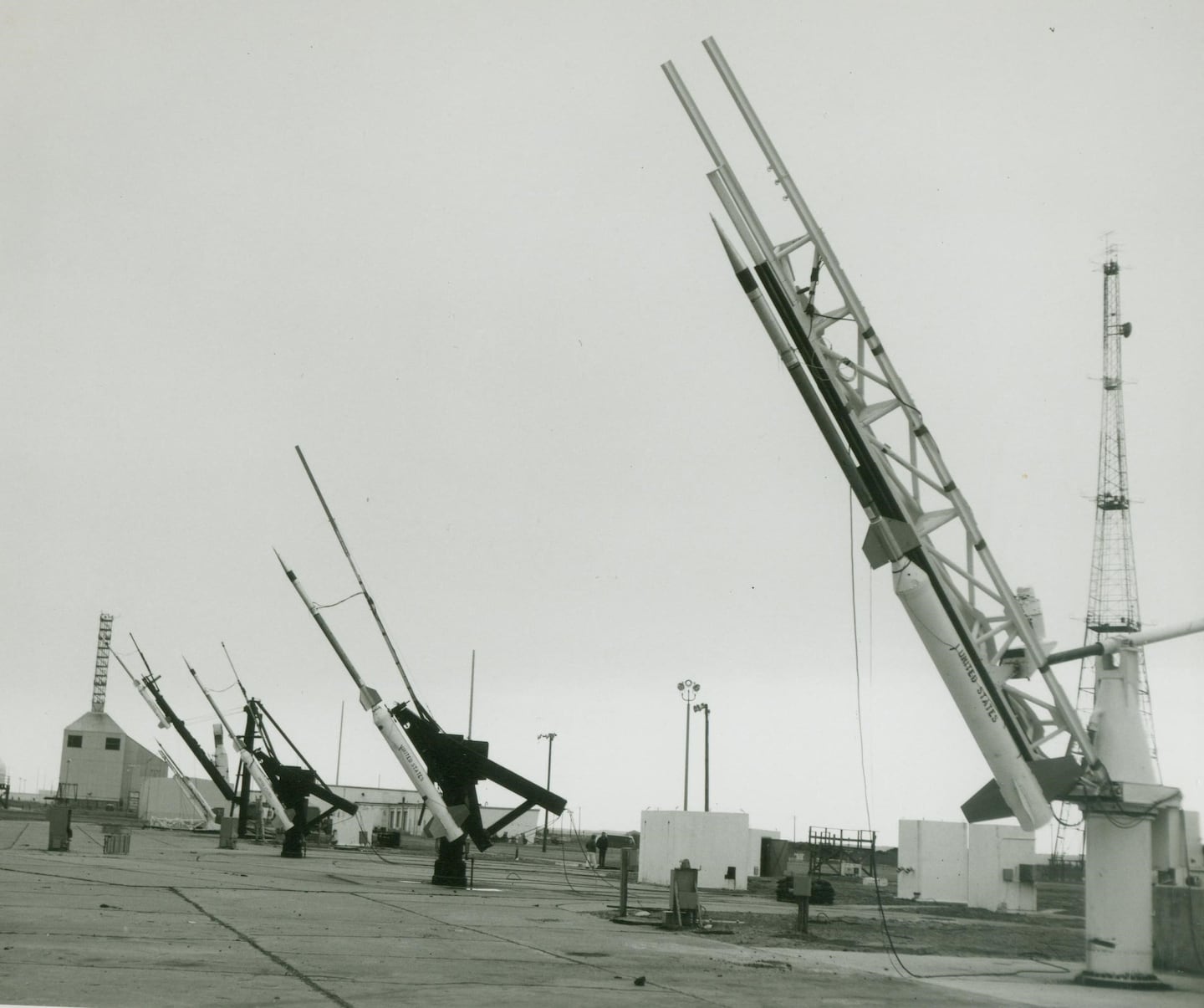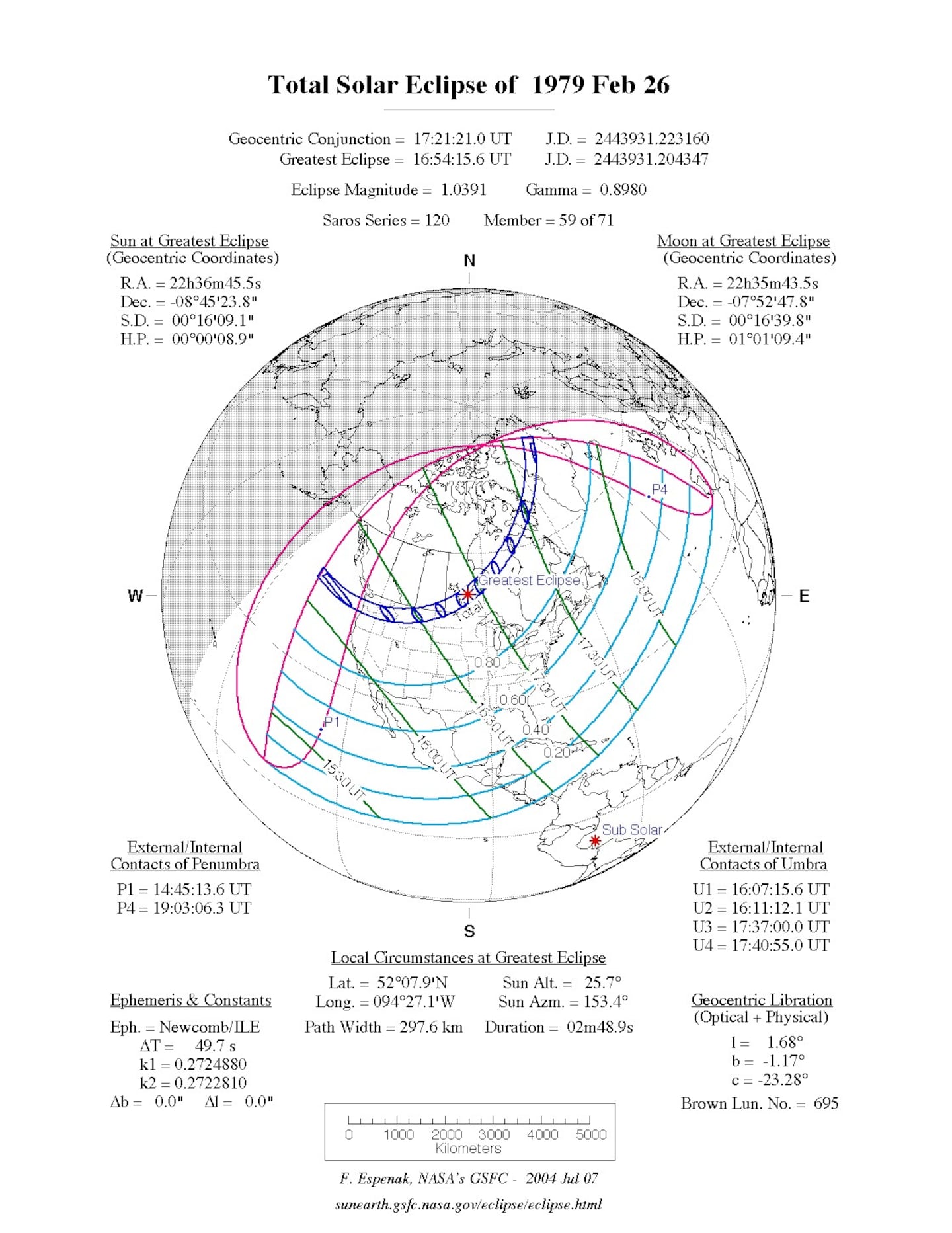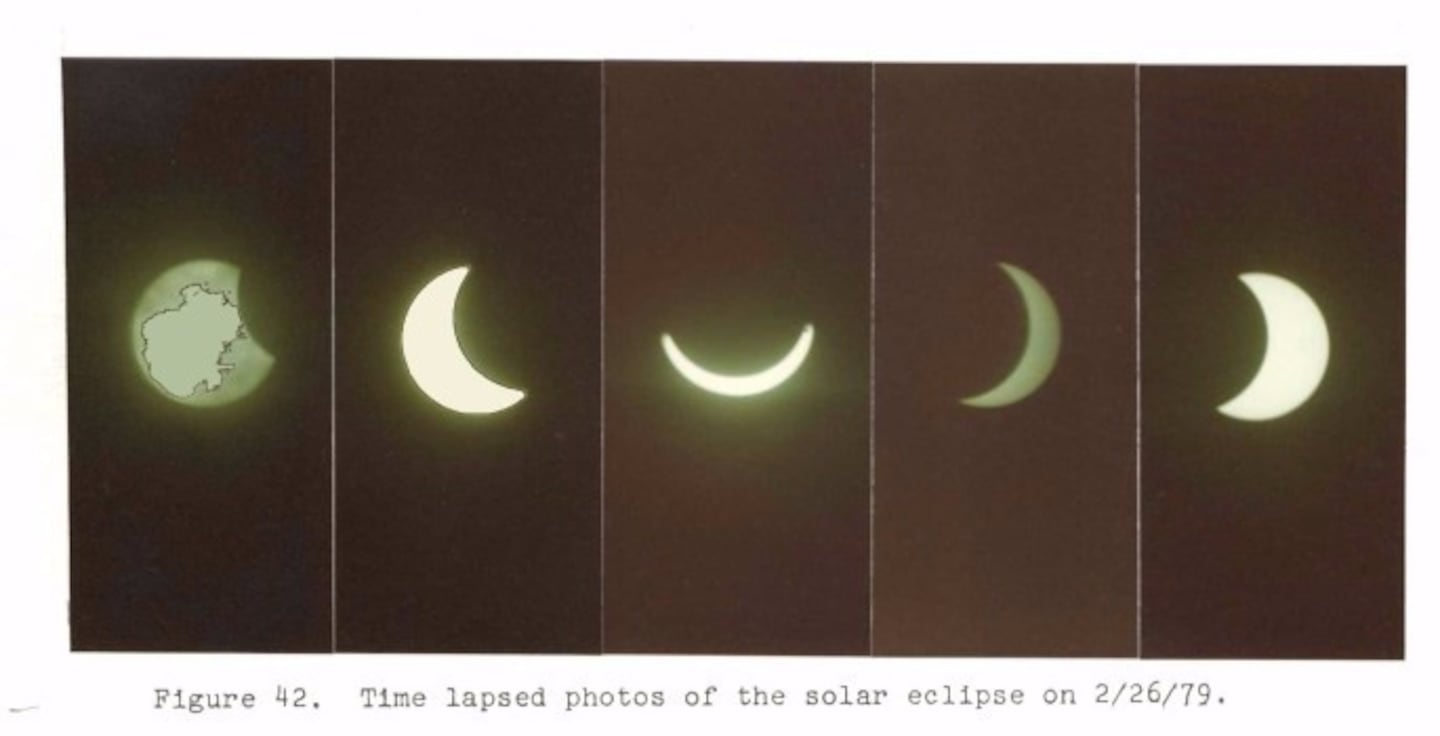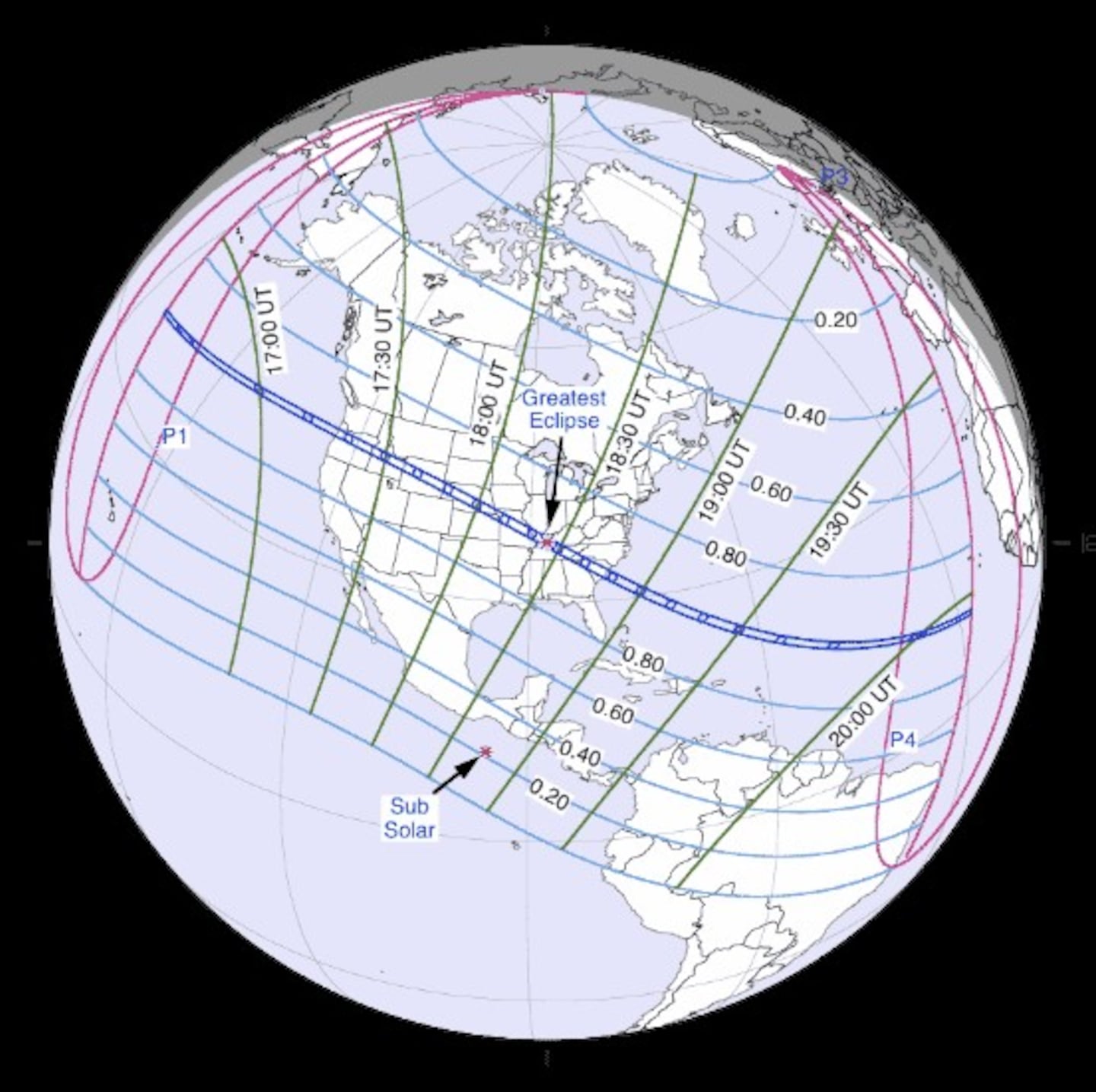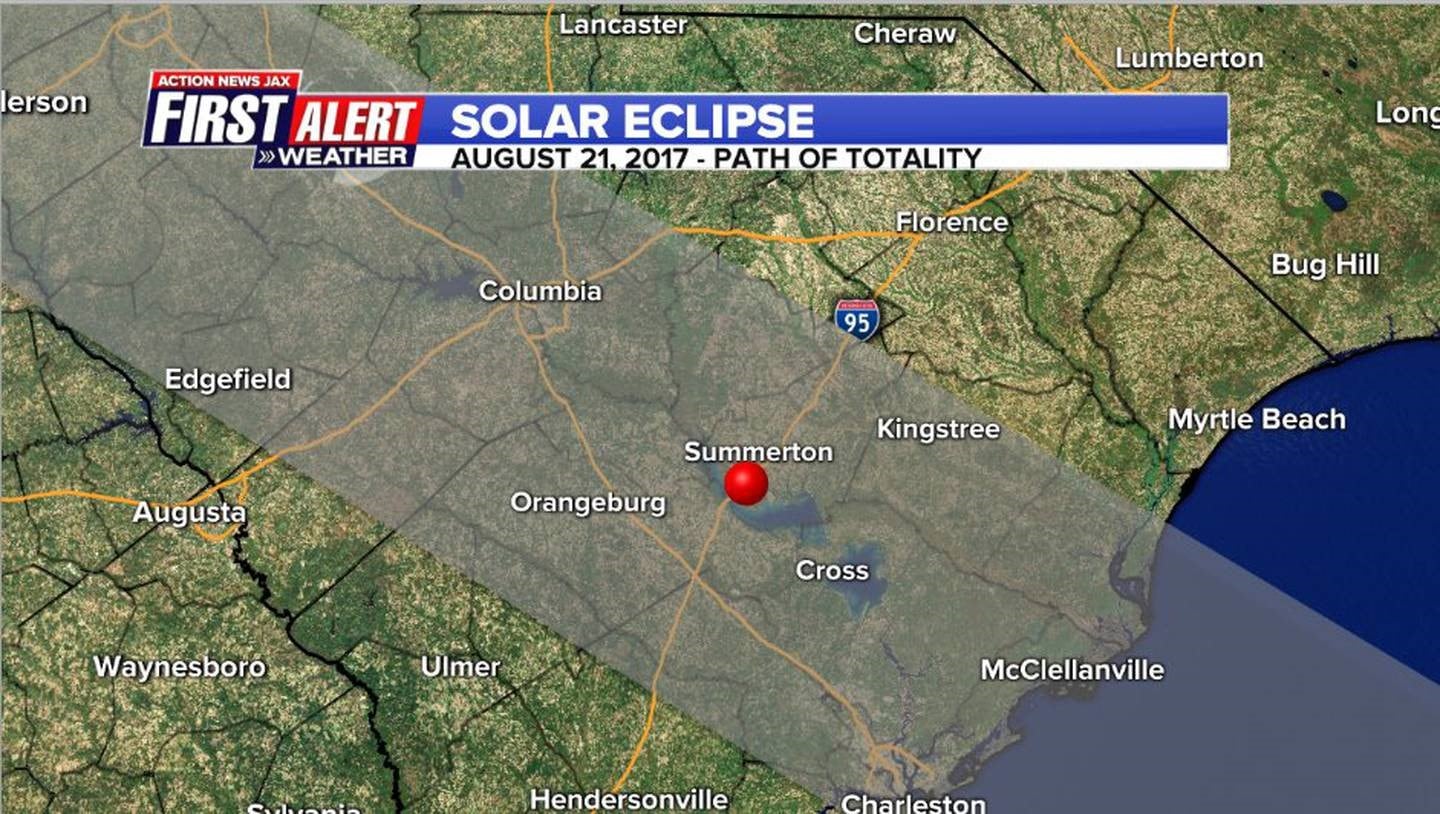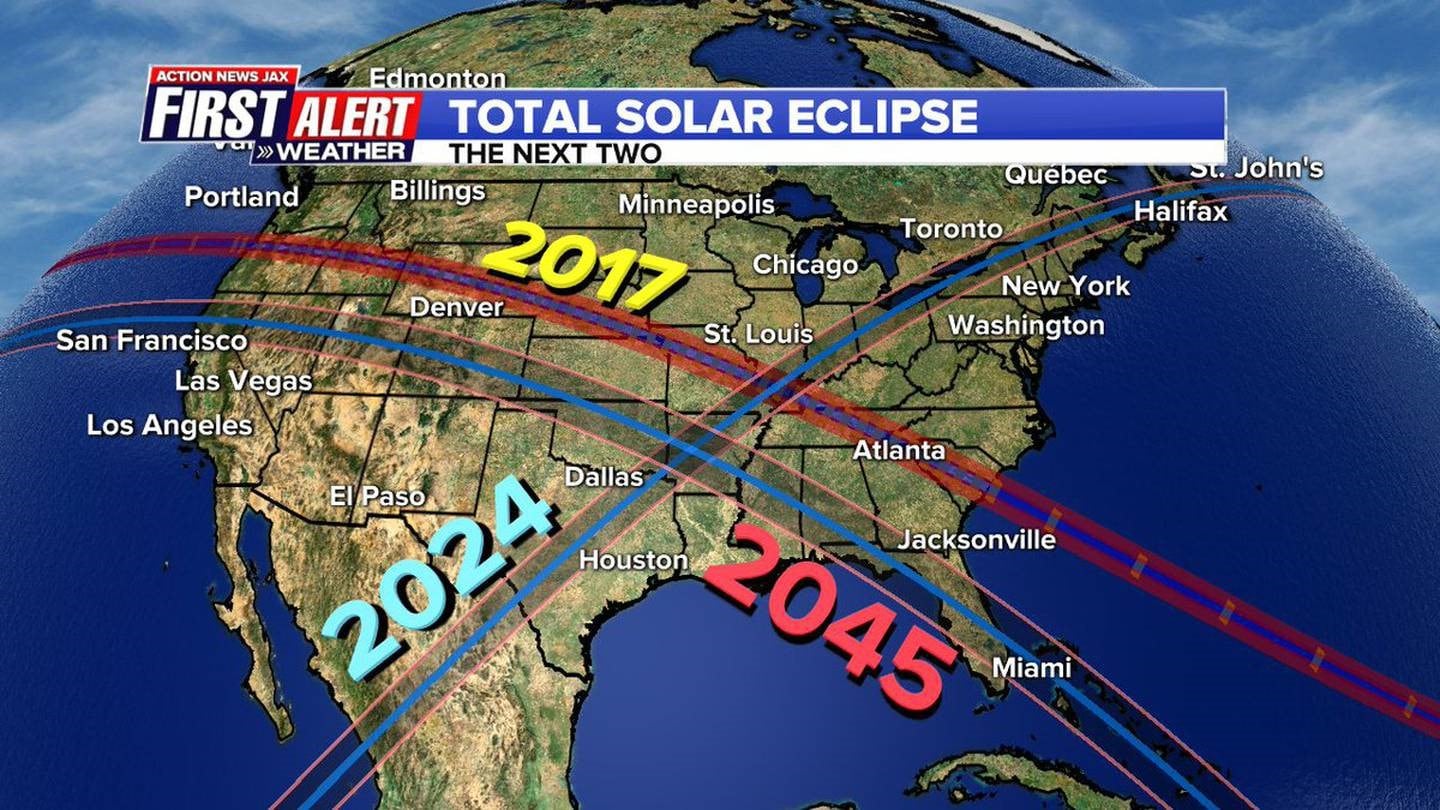JACKSONVILLE, Fla. — The history of total solar eclipses in the contiguous U.S. over the past 100+ years is an interesting one. I will focus on six such eclipses going back to the early 20th Century.
>>> STREAM ACTION NEWS JAX LIVE <<<
** June 8, 1918 – the next U.S. Pacific to Atlantic total solar eclipse in the U.S. would not be until August, 2017. Coming ashore in Washington state, the eclipse exited in Florida. Totality included Orlando & Melbourne. One of the most notable aspects was the eclipse helped to confirm Einstein’s Theory of General Relativity (the basic idea: “instead of being an invisible force that attracts objects to one another, gravity is a curving or warping of space. The more massive an object, the more it warps the space around it”).
Here’s an interesting article from a Kansas newspaper in 1918 mentioning that there will not be another eclipse of such great coverage across the U.S. for nearly 100 years... until 2017.
Read: Get ready: Here’s a playlist for the April 2024 solar eclipse
NY Tribune newspaper below courtesy Michael Zeiler, GreatAmericanEclipse.com
Washburn Observatory:
** January 24, 1925 – noteworthy as this total eclipse included New York City though totality was only about the north half of the city. Temperatures were bitterly cold hovering near zero Fahrenheit as the eclipse began at 9:11am. The next total solar eclipse over NYC will not be until May 1, 2079.
Read: Buresh Blog: April, 2024 Solar Eclipse!
Sam M. Burka (left), a physicist at McCook Field, Ohio, rides with Lt. George W. Goddard to photograph the total solar eclipse Jan. 24, 1925. They were among 25 planes to observe; others were unable to take off due to the cold. (Image credit: United States Air Force:
14 Edison Company photographers were poised to capture the eclipse and any unusual phenomena in New York City Jan. 24, 1925. (Image credit: Consolidated Gas Co. of NY):
** July 20, 1963 – This solar eclipse was confined to Maine & included beautiful views from Acadia National Park.
PATHWAY -- An historic map of Maine’s last total solar eclipse pathway that happened in 1963 and passed over Dover-Foxcroft and Bangor.
** March 7, 1970 – this total solar eclipse included the Florida Panhandle to the coast of the Carolina’s & Virginia with 90%+ of the sun eclipsed in Jacksonville. Map below - Michael Zeiler, GreatAmericanEclipse.com
The eclipse, also known as the “eclipse of the century,” passed directly over NASA’s Wallops Station (now Wallops Flight Facility), where researchers launched 32 sounding rockets, also known as suborbital rockets, to “conduct meteorology, ionospheric and solar physics experiments surrounding the solar eclipse event,” NASA officials said in a statement.
This campaign required eight different launch vehicles, including ARCAS, Nike-Apache, Nike-Cajun, Nike-Tomahawk, Nike-Iroquois, Aerobee 150, Aerobee 170 and Javelin. Nike-Cajun led off the campaign with its launch on March 6 at 4:30 a.m. EST to measure Earth’s ozone layer and water vapor. Subsequent rocket launches followed on March 6 through March 8.
This total eclipse was the first to occur in the satellite era as shown below (Michael Zeiler, GreatAmericanEclipse.com)
** Feb. 26, 1979 – this was the last U.S. solar eclipse in the Lower 48 until 2017 with totality from Washington & Oregon to North Dakota. The image below from NASA:
T.V. networks did some live reporting in the morning but cable was not truly a player yet with CNN founded one year later.
Frank Reynolds, ABC news anchorman ended his broadcast with a hopeful message of world peace when in 2017 the next total eclipse would pass over the country, People reported.
Read: How to interact with 2024 solar eclipse: Check out these useful apps
Reynolds took viewers through the various stages of the eclipse as it passed through Portland, Oregon, and Helena, Montana. Reynolds, who died in July 1983, ended his report with his optimistic hope for peace.
“So that’s it, the last solar eclipse to be seen on this continent in this century,” Reynolds said. “As I said, not until Aug. 21, 2017, will another eclipse be visible from North America. “That’s 38 years from now. May the shadow of the moon fall on a world at peace.”
And 45 years until the next one in April, 2024.
Time lapsed photographs of the February 26 total solar eclipse from the Lacreek National Wildlife Refuge annual report, 1979. (National Archives Identifier: 25496903)
August 21, 2017 – the long anticipated “Great American Eclipse” did not disappoint with a track from Oregon to South Carolina. I was at totality near I-95 in S. Carolina with my then teenage daughter + First Alert Certified Broadcast Meteorologist Garrett Bedenbaugh & Action News Jax videographer Russ Pyne. This eclipse is most certainly the most documented, most photographed in history… until April, 2024 that is.
[DOWNLOAD: Free Action News Jax app for alerts as news breaks]
[SIGN UP: Action News Jax Daily Headlines Newsletter]
Click here to download the free Action News Jax news and weather apps, click here to download the Action News Jax Now app for your smart TV and click here to stream Action News Jax live.


